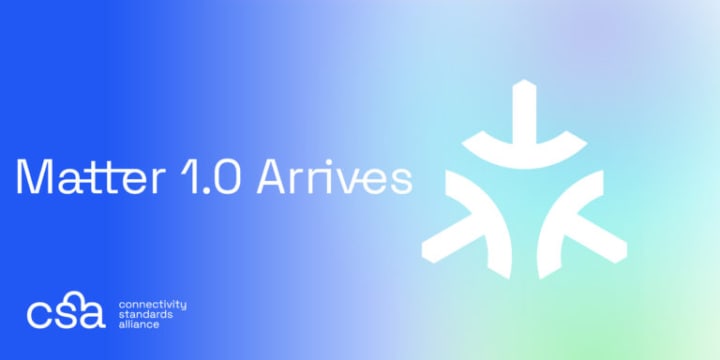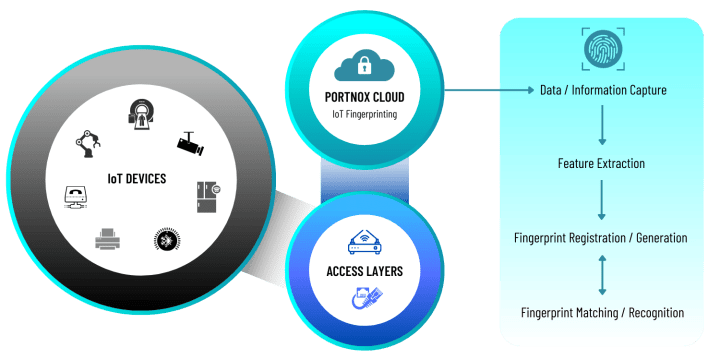Edoardo Barbieri
on 12 December 2022
Welcome to the combined October & November edition of the monthly State of IoT series.

These past couple of months were packed with news and announcements. Let’s dive straight in!
Matter 1.0 is finally here
Amazon, Apple, Comcast, Google, SmartThings, and the Connectivity Standards Alliance came together in 2019 to develop and promote an interoperable, secure connectivity standard for the future of the smart home. This gave rise to Matter, a new royalty-free, IPv6-based connectivity standard defining the application layer deployed on devices with Wi-Fi support, Thread and Bluetooth Low Energy (BLE).
Although the Matter specification is proprietary, i.e. licensed by the Connectivity Standards Alliance (CSA), formerly Zigbee Alliance, the code is open source. Earlier this year, the CSA announced a delay in the specification release. Citing additional tests, the CSA promised Matter’s SDK would be complete later during spring, with Version 0.9 of the specification available to all Alliance members towards mid-year.
Early this October, the CSA announced the official release of the Matter 1.0 specification.

As part of the release, authorised test labs will be open for certifications to bring products to market and shorten the time to value. It’s good news for all smart home players: Matter could succeed in simplifying development for manufacturers and increasing compatibility for consumers.
Google unveils a new OS for embedded devices
Google announced the KataOS operating system (OS) for smart devices. KataOS is at an early exploratory stage, targeting embedded devices on RISC-V chips.
The OS runs on top of seL4 and is written almost entirely in Rust. As per the Google team, KataOS is optimised for network-connected embedded systems running ML applications. The KataOS components rely on an augmented version of seL4’s CAmkES framework, an architecture for microkernel-based embedded systems.
KataOS is not Google’s first attempt at penetrating the IoT market with a new OS. Google introduced Brillo, an IoT OS allegedly capable of running on 32MB RAM at Google I/O in 2015. After renaming Brillo to Android Things the following year, Google released the first non-preview version of Android Things, promising three years of updates for every device. In early 2019, Google decided to ‘refocus’ Android Things for OEMs building speakers and displays, giving up on its vision as a general-purpose OS for IoT devices. A couple of years later, Google killed Android Things. Given the uncertain historical records, the future of the early-stage KataOS remains unknown.
New Ubuntu images on Intel processors
Canonical and Intel released production-ready Ubuntu Linux images on Intel silicon.
The new images cover the entire Ubuntu family: Core, Desktop and Server editions. The Ubuntu Desktop operating system powers millions of PCs and laptops and is certified on hundreds of workstations from top OEM vendors. Ubuntu Server is a version of the Ubuntu operating system (OS) bringing economic and technical scalability to public and private data centres. Built on snaps packages, Ubuntu Core is a version of the Ubuntu OS designed and engineered for IoT and embedded systems.
The production-grade family of Ubuntu images are available on the latest Ubuntu Core 22, Ubuntu Desktop 22.04 and Ubuntu Server 22.04 for a broad range of Intel hardware, namely the Elkhart Lake line of processors, Tiger Lake, Ice Lake and Alder Lake S and P.
By adopting the long-term security-maintained and supported Ubuntu on Intel’s processors, enterprises can focus on what drives their business and redirect resources towards core value-add activities.

Discover how open standards and interfaces are accelerating the world’s move towards Industry 4.0 in our on-demand webinar on IT/OT convergence.
Read the press release, download the latest Ubuntu images, and watch the on-demand webinar between Intel and Canonical, or get in touch if you are working on a commercial project.
New Volvo SUV powered by NVIDIA Drive Orin
Volvo wants to ship a new EV yearly until 2025, targeting a fully-electric, software-defined lineup by 2030. According to that vision, this November the Swedish automaker introduced the new fully electric EX90 SUV.
The electric SUV is the first flagship vehicle featuring Ride Pilot, Volvo’s new advanced driver-assist system. The EX90 handles safety, infotainment and battery management via the NVIDIA DRIVE Orin SoC. NVIDIA introduced Orin two years ago, positioning it as an advanced software-defined compute engine for autonomous vehicles and robots.

When looking at modern vehicles today, they are not just a computer on wheels, but rather tons of computers on four wheels. As the amount of compute in automotive is ever increasing, chips must satisfy rigorous safety requirements before being integrated into vehicles. The ISO 26262 standard defines an Automotive Safety Integrity Level (ASIL) to map the applicable requirements and processes according to the criticality of the system. As per NVIDIA, the DRIVE SoC is designed to achieve safety standards like ISO 26262 ASIL-D.
Digital twins for mining and construction
San Francisco-based Skycatch provides geospatial data software for the physical world. The company specialises in aerial data capture automation via drone mapping software for mining and construction.
Skycatch is now expanding its portfolio and exploring the digital twins’ space using the NVIDIA Omniverse platform, a large-scale, full-fidelity virtual world engine. After collecting local data from sensors and edge devices powered by the NVIDIA Jetson Nano 1 and Jetson AGX Xavier, SkyVerse, Skycatch’s computer vision software, processes the data in a format digestible by the simulation engine.
With Skycatch’s partnership with NVIDIA likely resulting in wider enterprise adoption, it will be interesting to see how digital twin technologies will further bring substantive benefits to the mining and construction world.
IBM shuts Watson IoT Platform down
IBM Watson IoT Platform allowed manufacturers to collect and start processing data from connected devices. Whether from buildings or vehicles, the platform provides a UI to monitor and manage one’s fleet.
In 2018, IBM stated the Watson IoT Platform’s next evolution would be delivering a future-proof Industrial IoT solution. However, after selling Watson Health, the Watson IoT Platform sister initiative, to Francisco Partners at the start of 2022, IBM communicated it will “sunset the Watson IoT Platform service on IBM Cloud effective December 1st, 2023 without a direct replacement”.
This is, of course, not the first time an IoT solution gets shut down. For instance, Google introduced Cloud IoT Core, a fully managed service for securely connecting and managing devices, at the Google I/O conference in May 2017. Earlier this year, Google announced it would retire its Google Cloud IoT Core on August 16, 2023.
Device authentication with cloud-native IoT fingerprinting
Secure device authentication and onboarding prevent unauthorised access to private software and services. Fleet owners can limit the extent of the ever-increasing cybersecurity challenges by establishing a trusted communication channel between an IoT device and its cloud backend.
With the proliferation of tightly connected, embedded devices, accomplishing the above is not easy. Austin-based Portnox recently introduced the first cloud-native, AI-powered IoT fingerprinting solution designed for zero-trust security models. Portnox’s IoT Fingerprinting authenticates one’s devices via fingerprint matching, providing fleet owners with real-time visibility into every device connected to the network.

Portnox states the new profiling solution will list, among others, the device type, manufacturer, OS and version. It will do so by relying on a comprehensive catalogue of over 260,000 unique IoT device models across 27,000 different brands and 30,000 operating systems. If anything, the reported numbers confirm fragmentation levels in the embedded and IoT landscape.
Stay tuned for more IoT news
We will soon be back with next month’s summary of IoT news. Meanwhile, join the conversation on IoT Discourse to discuss everything related to IoT and tightly connected, embedded devices.
Further reading


Why is Linux the OS of choice for IoT devices? Find out with the official guide to Linux for embedded applications



